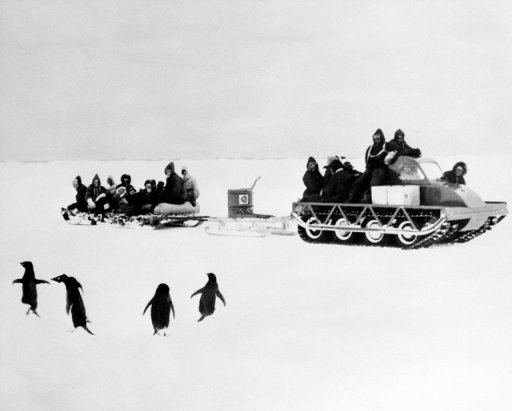Unusual sexual activities observed among Adelie penguins a century ago by Captain Scott’s polar team
Accounts of unusual sexual activities among Adelie penguins, observed a century ago by Dr. George Murray Levick, a member of Captain Scott’s polar team, are finally being made public.
Details, including “sexual coercion”, recorded by Dr. George Murray Levick were considered so shocking that they were removed from official accounts.
However, scientists now understand the biological reasons behind the acts that Dr. George Murray Levick considered “depraved”.
The Natural History Museum in UK has published his unedited papers.
Dr. George Murray Levick, an avid biologist, was the medical officer on Captain Scott’s ill-fated Terra Nova expedition to the South Pole in 1910. He was a pioneer in the study of penguins and was the first person to stay for an entire breeding season with a colony on Cape Adare.
He recorded many details of the lives of Adelie penguins, but some of their activities were just too much for the Edwardian sensibilities of the good doctor.
He was shocked by what he described as the “depraved” sexual acts of “hooligan” males who were mating with dead females. So distressed was he that he recorded the “perverted” activities in Greek in his notebook.

Accounts of unusual sexual activities among Adelie penguins, observed a century ago by Dr. George Murray Levick, a member of Captain Scott's polar team, are finally being made public
On his return to Britain, Dr. George Murray Levick attempted to publish a paper entitled “the natural history of the Adelie penguin”, but according to Douglas Russell, curator of eggs and nests at the Natural History Museum, it was too much for the times.
“He submitted this extraordinary and graphic account of sexual behaviour of the Adelie penguins, which the academic world of the post-Edwardian era found a little too difficult to publish,” Douglas Russell said.
The sexual behavior section was not included in the official paper, but the then keeper of zoology at the museum, Sidney Harmer, decided that 100 copies of the graphic account should be circulated to a select group of scientists.
Douglas Russell said they simply did not have the scientific knowledge at that time to explain Dr. George Murray Levick’s accounts of what he termed necrophilia.
“What is happening there is not in any way analogous to necrophilia in the human context,” Douglas Russell said.
“It is the males seeing the positioning that is causing them to have a sexual reaction.
“They are not distinguishing between live females who are awaiting congress in the colony, and dead penguins from the previous year which just happen to be in the same position.”
Only two of the original 100 copies of Dr. George Murray Levick’s account survive. Douglas Russell and colleagues have now published a re-interpretation of Dr. George Murray Levick’s findings in the journal Polar Record.
Douglas Russell described how he had discovered one of the copies by accident.
“I just happened to be going through the file on George Murray Levick when I shifted some papers and found underneath them this extraordinary paper which was headed <<the sexual habits of the adelie penguin, not for publication>> in large black type.
“It’s just full of accounts of sexual coercion, sexual and physical abuse of chicks, non-procreative sex, and finishes with an account of what he considers homosexual behaviour, and it was fascinating.”
The report and Dr. George Murray Levick’s handwritten notes are now on display at the Natural History Museum for the first time. Douglas Russell believes they show a man who struggled to understand penguins as they really are.
“He’s just completely shocked. He, to a certain extent, falls into the same trap as an awful lot of people in seeing penguins as bipedal birds and seeing them as little people. They’re not. They are birds and should be interpreted as such.”

